How to Catch the Next Eclipse: A List of Solar and Lunar Eclipses in 2021 and Beyond
Miss the last eclipse? Here are the next ones!
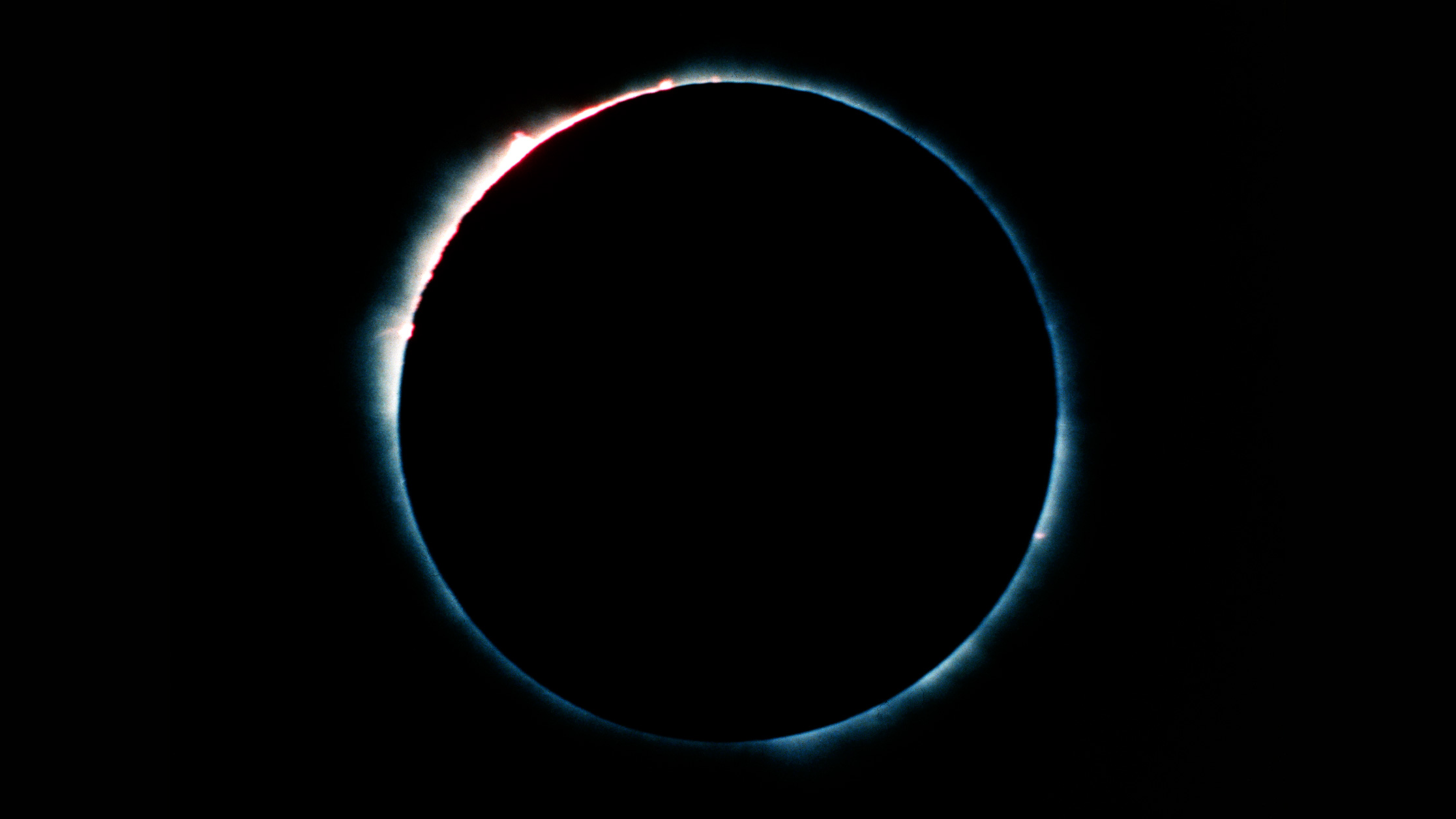
When the moon takes on a reddish color, or when the sun's corona shines like a glowing ring aloft in the sky, it's hard to ignore the sight.
Lunar and solar eclipses have enchanted and even frightened humans for thousands of years. Most recently, skywatchers were treated to a total solar eclipse as its path crossed the Pacific Ocean and made landfall in La Serena, Chile, on Tuesday (July 2). Millions of spectators within and beyond the path of totality enjoyed the sight, which crossed South America until ending just south of Buenos Aires, Argentina.
Eclipses aren't limited to one part of the world. In fact, there will be 12 lunar and solar eclipses traversing different places on Earth before the next North American cross-continental total solar eclipse on April 8, 2024. Here is a list of upcoming lunar and solar eclipses and where they will pass. Data is based on timetables and maps from NASA and the TimeAndDate.com.
Related: Best Photos of the 2019 Total Solar Eclipse
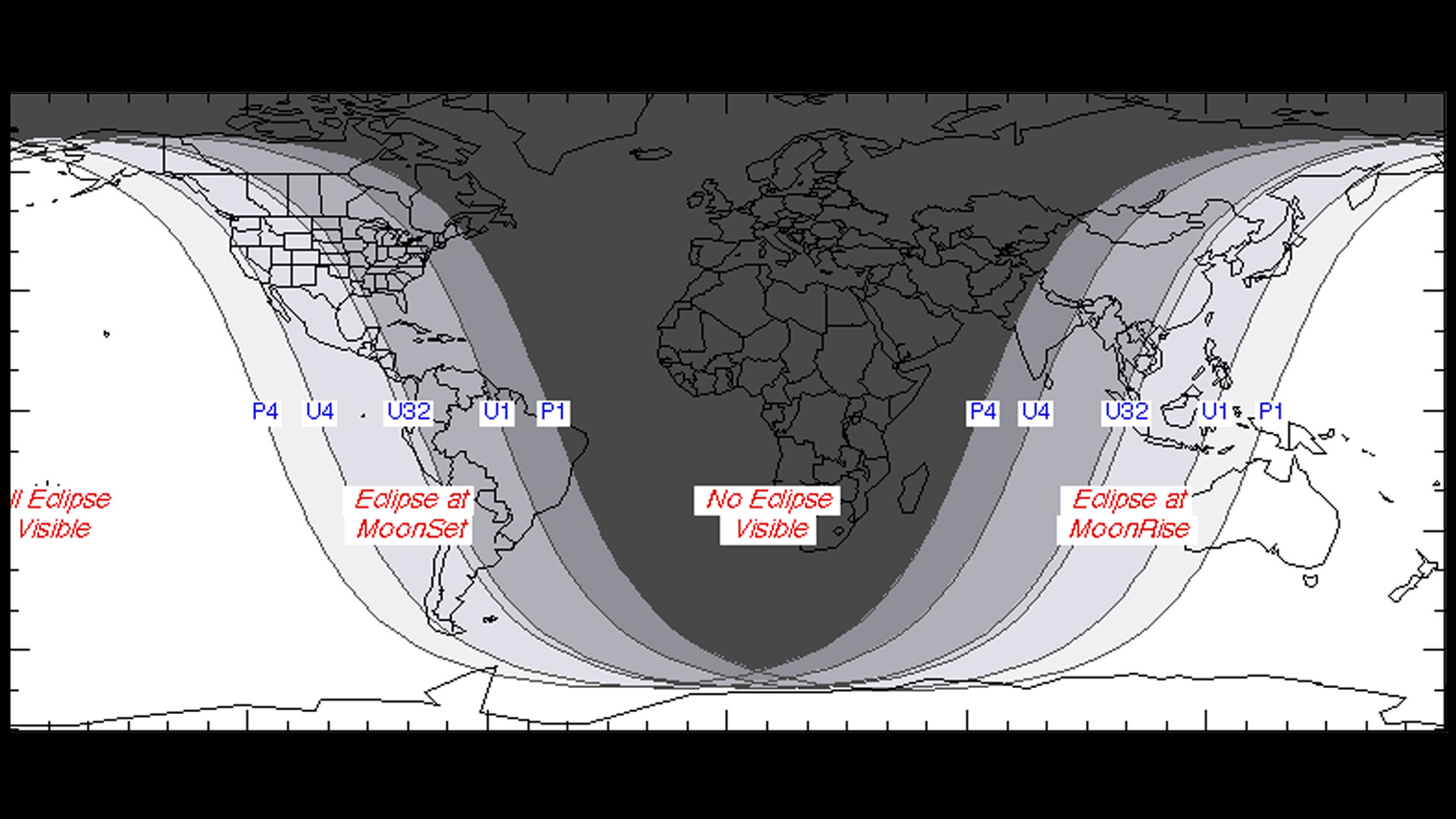
Total Lunar Eclipse of May 26, 2021
The entire surface of the lunar nearside will be flushed in red hues on May 26, 2021. The eclipse will be centered over the Pacific Ocean, where New Zealand and most of Australia will be able to watch the eclipse in its entirety. The total lunar eclipse peaks at 7:19 a.m. EDT (1119 GMT).
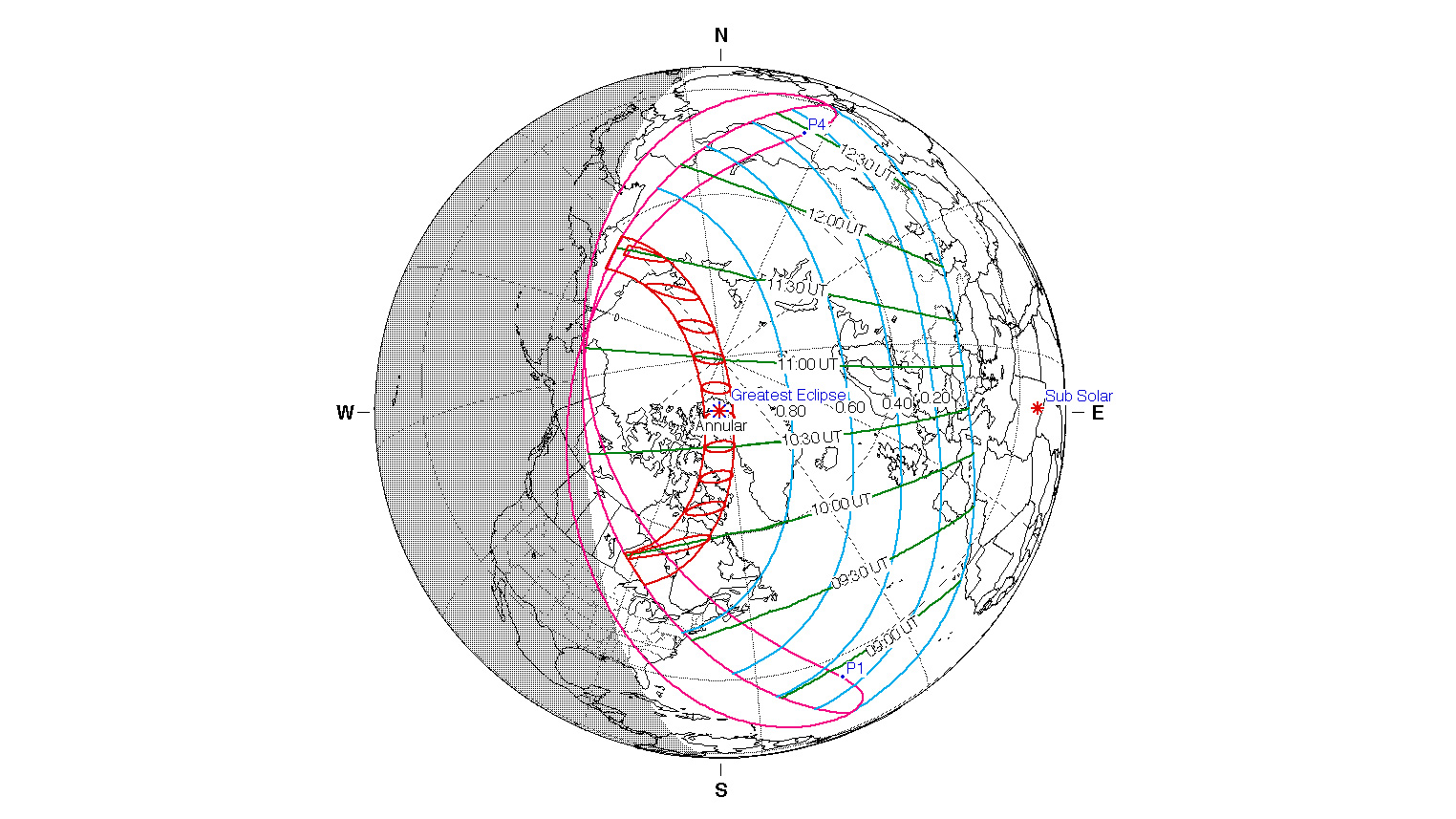
Annular Solar Eclipse of June 10, 2021
The frigid Arctic region that will experience the ''ring of fire'' this time around. A portion of northern Greenland, parts of nearby Baffin Bay, eastern Hudson Bay and northeastern Russia will sit in the path of the annular solar eclipse. This eclipse peaks at 6:41 a.m. EDT (1041 GMT).
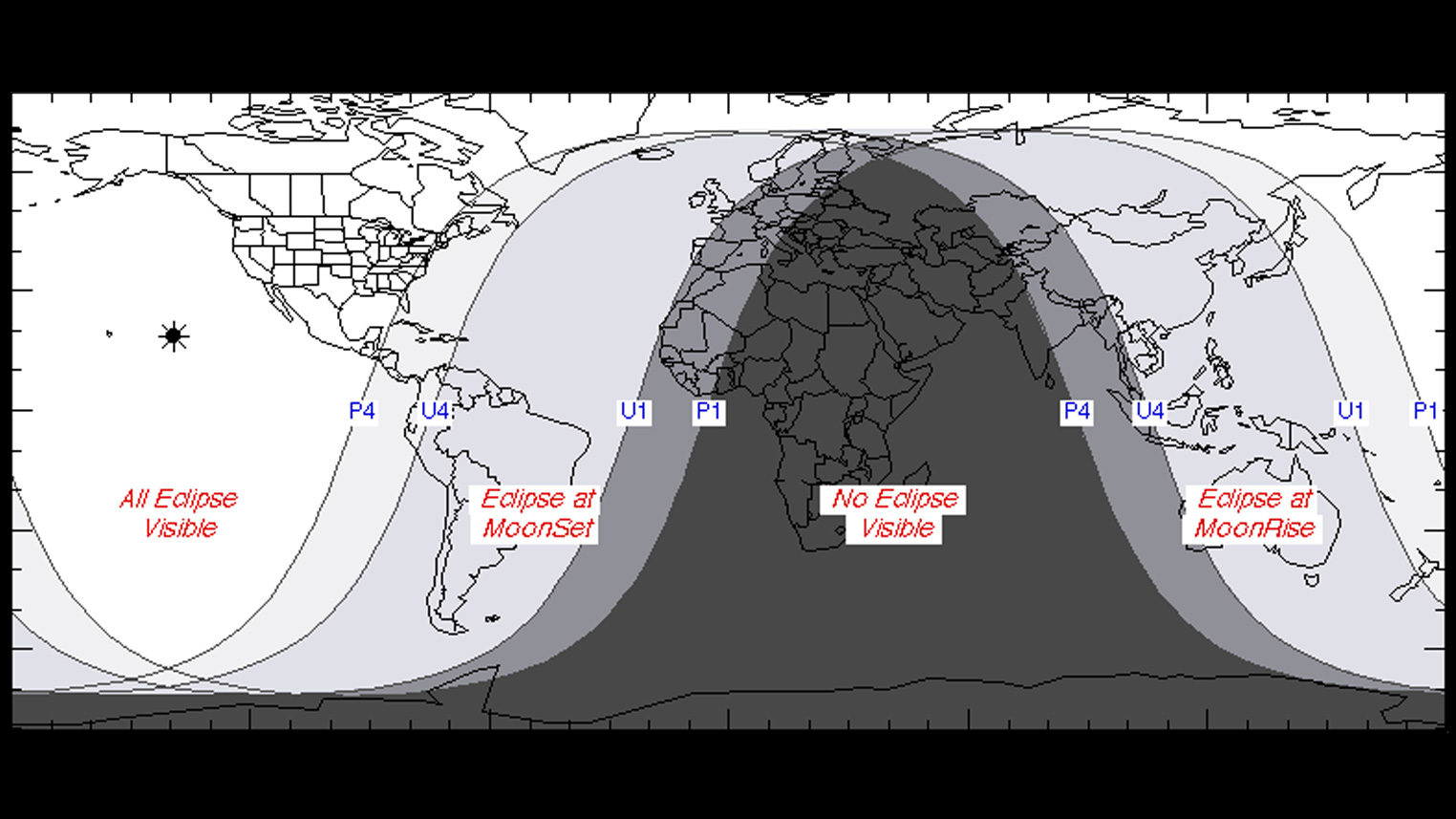
Partial Lunar Eclipse of Nov. 19, 2021
Although the moon doesn't technically get itself entirely through the deepest part of Earth's shadow, or umbra, most of the lunar face will turn a vivid reddish-color. All 50 states will catch the eclipse in its entirety, which peaks at 4:04 a.m. EST (0904 GMT).
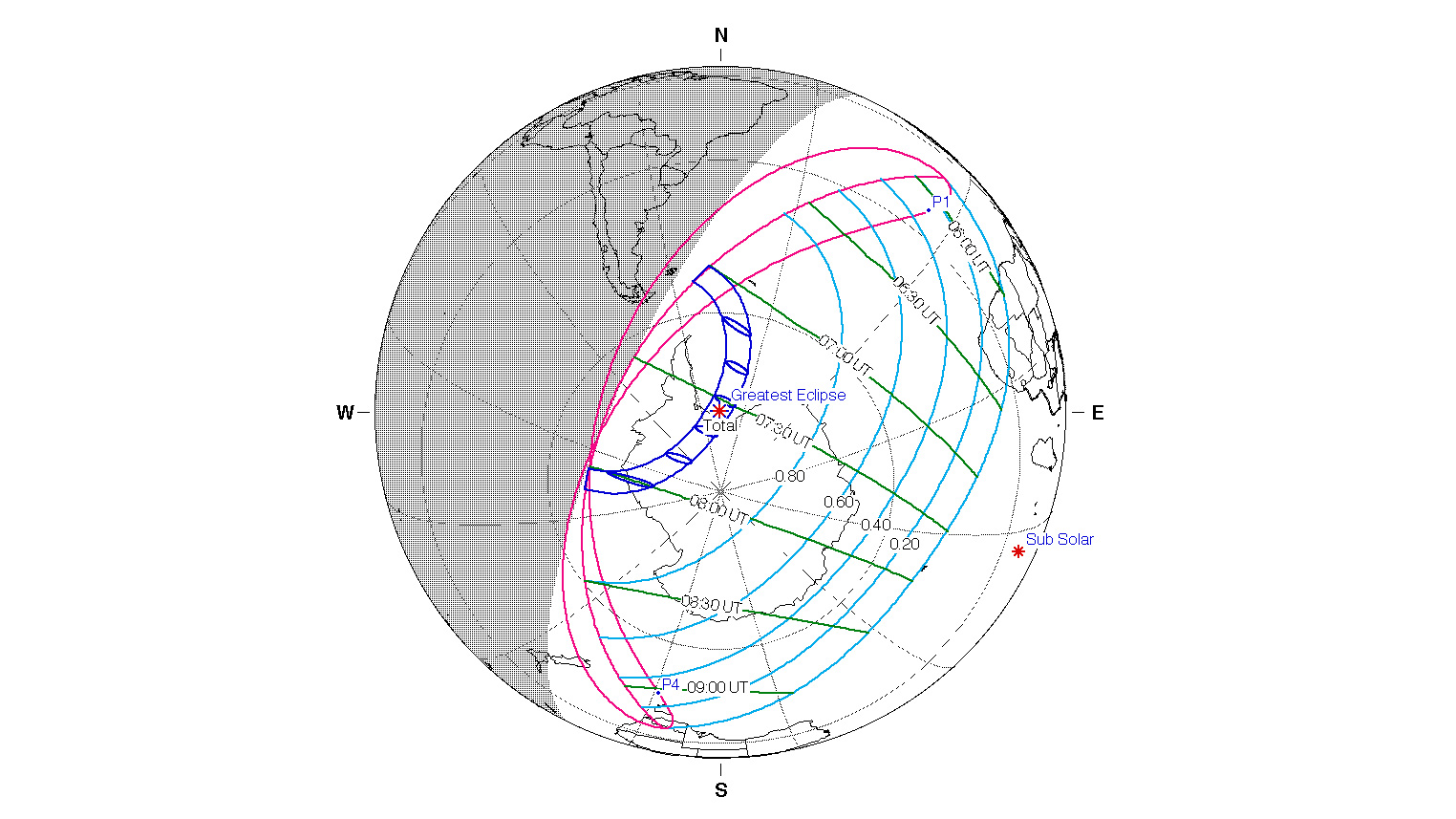
Total Solar Eclipse of Dec. 4, 2021
Weeks later, a total solar eclipse will cast a shadow across the Antarctic peninsula, which sits just below the southernmost tip of South America. It will peak at 2:33 a.m. EST (0733 GMT). If that timing seems puzzling, remember that the southern hemisphere is experiencing summer when the globe's northern half is battling winter, so the days are long and at some places near the poles, there is 24-hour daylight (and, during the winter, 24-hour night).
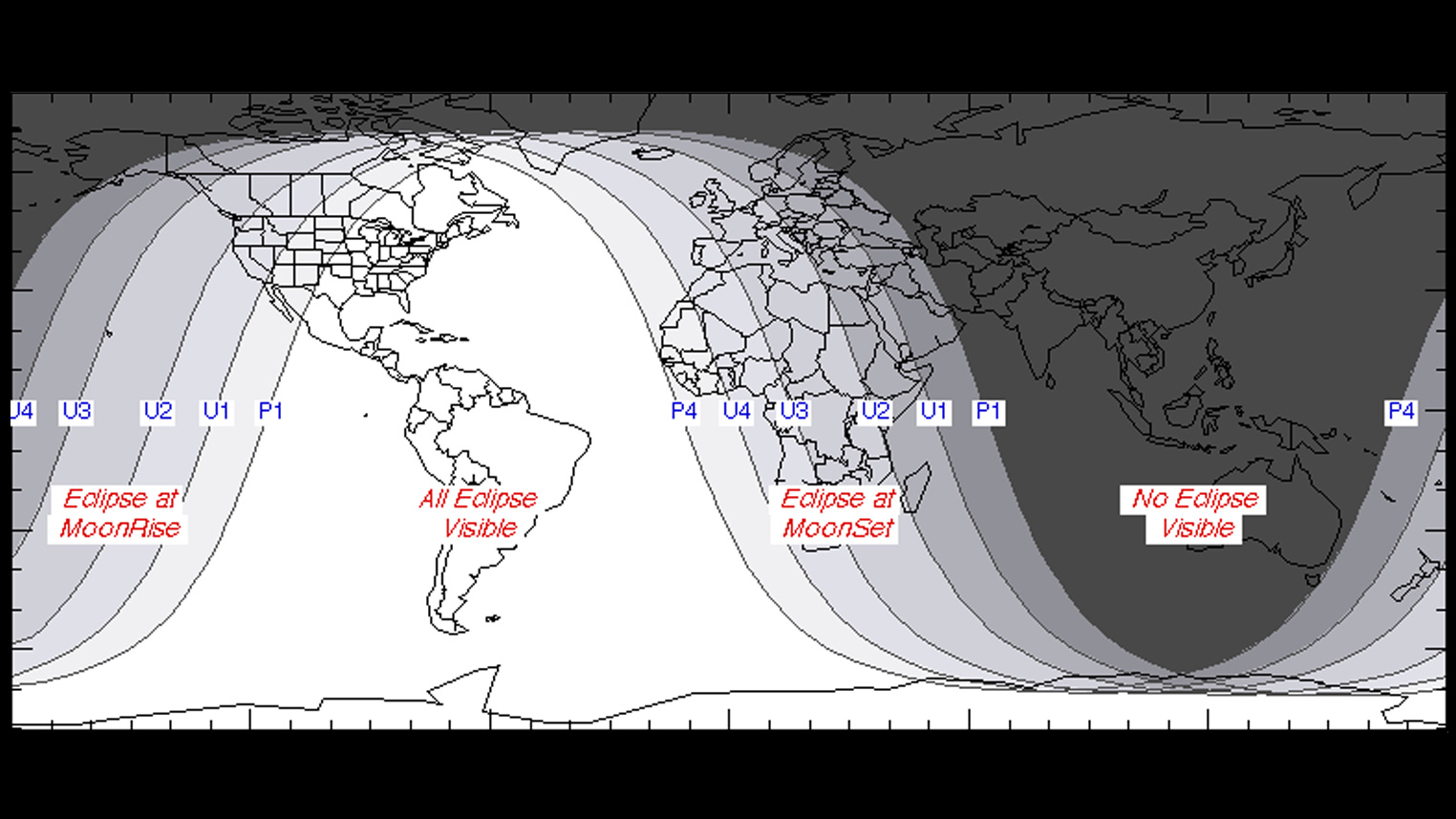
Total Lunar Eclipse of May 16, 2022
The moon will pass through the southern portion of Earth's deep shadow, and the total lunar eclipse will peak at 12:12 a.m. EDT (0412 GMT). As that timing suggests, the eclipse will be visible within the United States and South America.
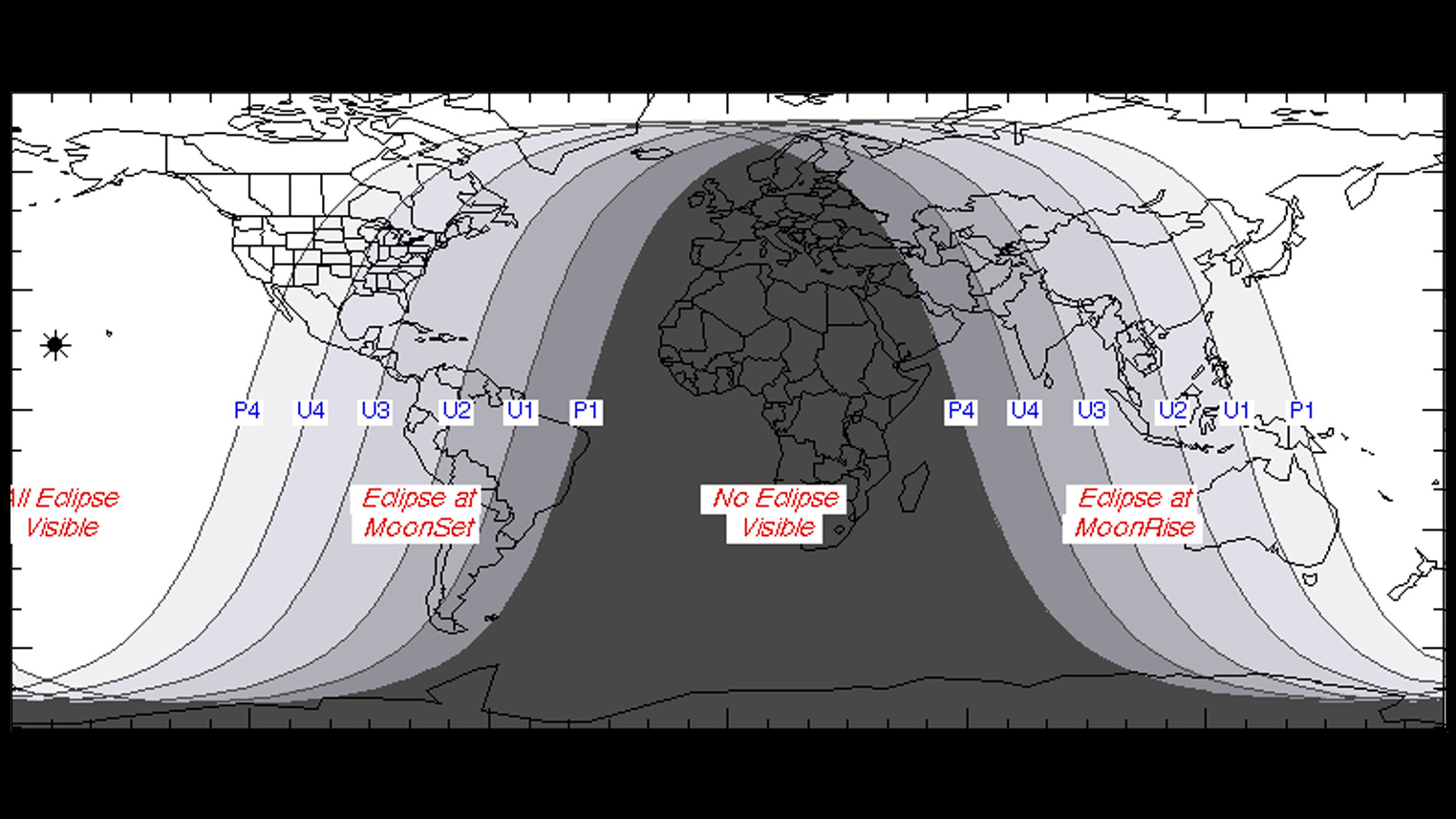
Total Lunar Eclipse of Nov. 8, 2022
Almost six months later, another blood moon will appear in the sky. Most of the world will be able to see the moon turn a reddish-color, except Africa and Europe. This total lunar eclipse peaks at 6:00 a.m. EST (1100 GMT).
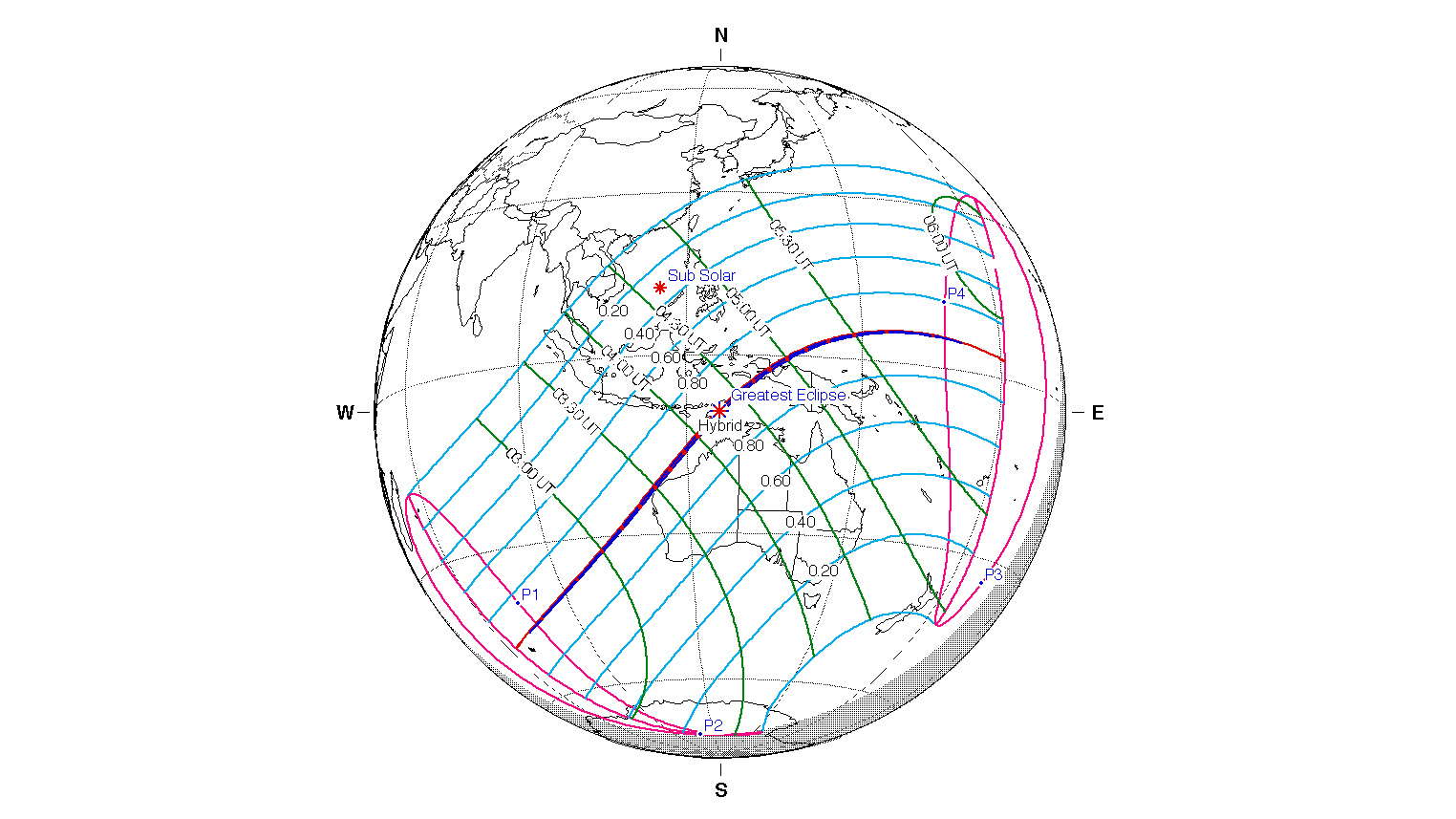
Total Solar Eclipse of April 20, 2023
Parts of Indonesia will be treated to a total solar eclipse on April 20, 2023. A 360-degree sunset will appear as the lunar disk blocks out all of the sun except for its corona, which will appear like a halo during totality. The eclipse peaks at 12:16 a.m. EDT (0416 GMT).
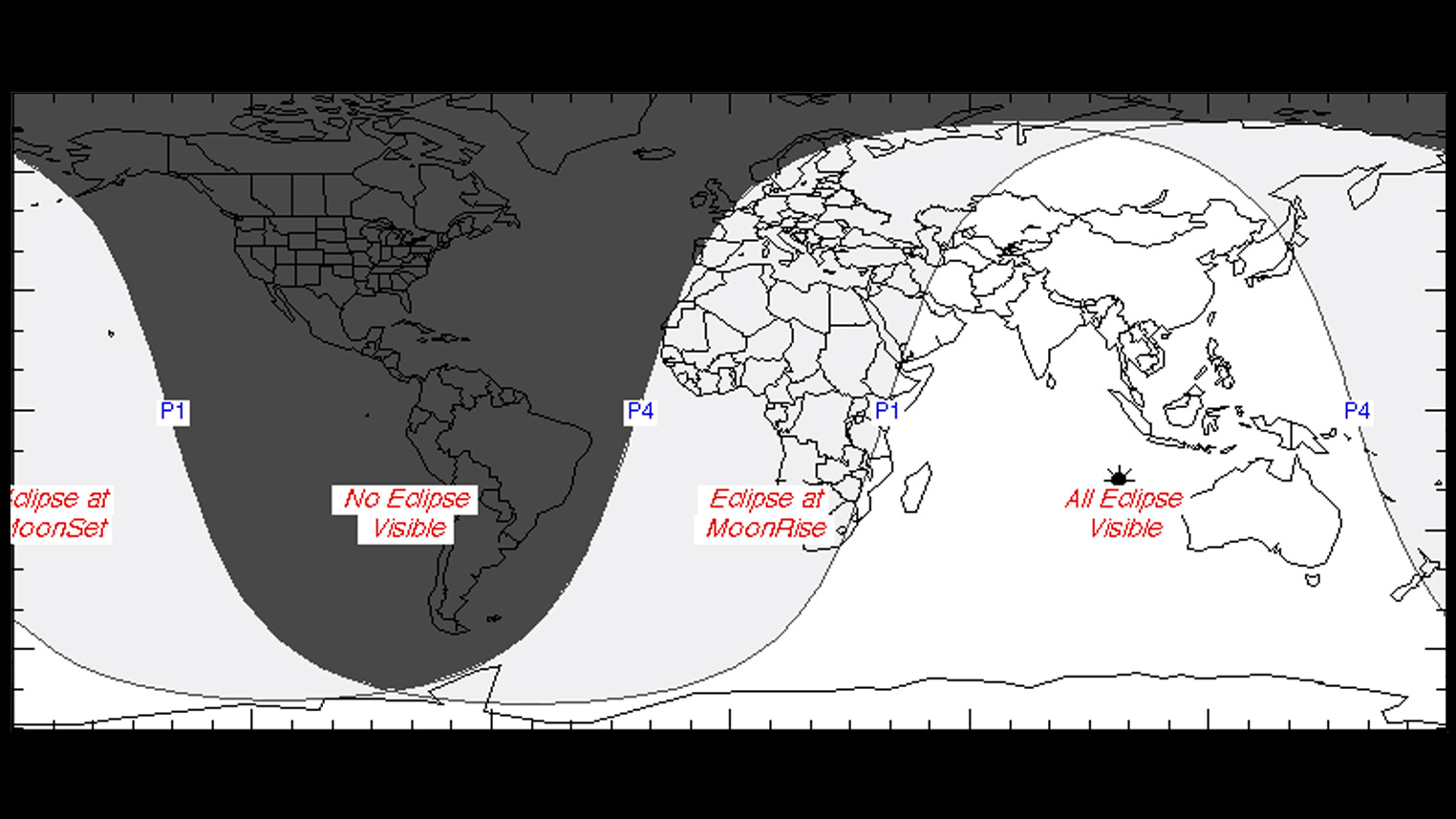
Penumbral Lunar Eclipse of May 5, 2023
All of the world except for North and South America will get to see the moon's color tinted slightly darker by the outer portion of Earth's shadow. The May 5, 2023 penumbral lunar eclipse will peak at 1:24 p.m. EDT (1724 GMT).
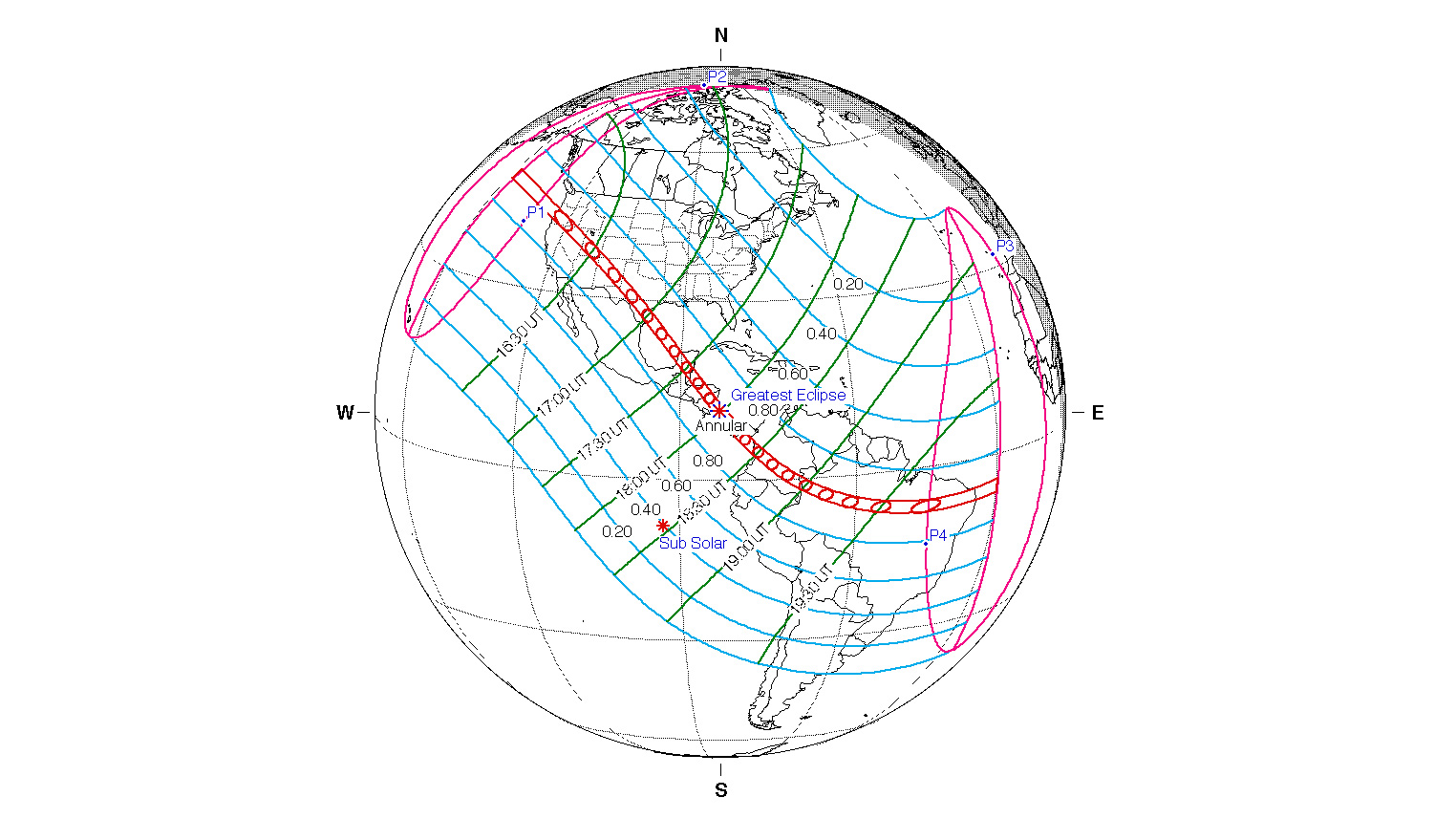
Annular Solar Eclipse of Oct. 14, 2023
Parts of North and South America will be treated to an annular solar eclipse as the path of the event sweeps from the northwestern United States, through Central America and then onto Brazil. This eclipse peaks at 1:59 p.m. EDT (1759 GMT).
Related: Get Ready for 2 Solar Eclipses Coming to the US in 2023 and 2024
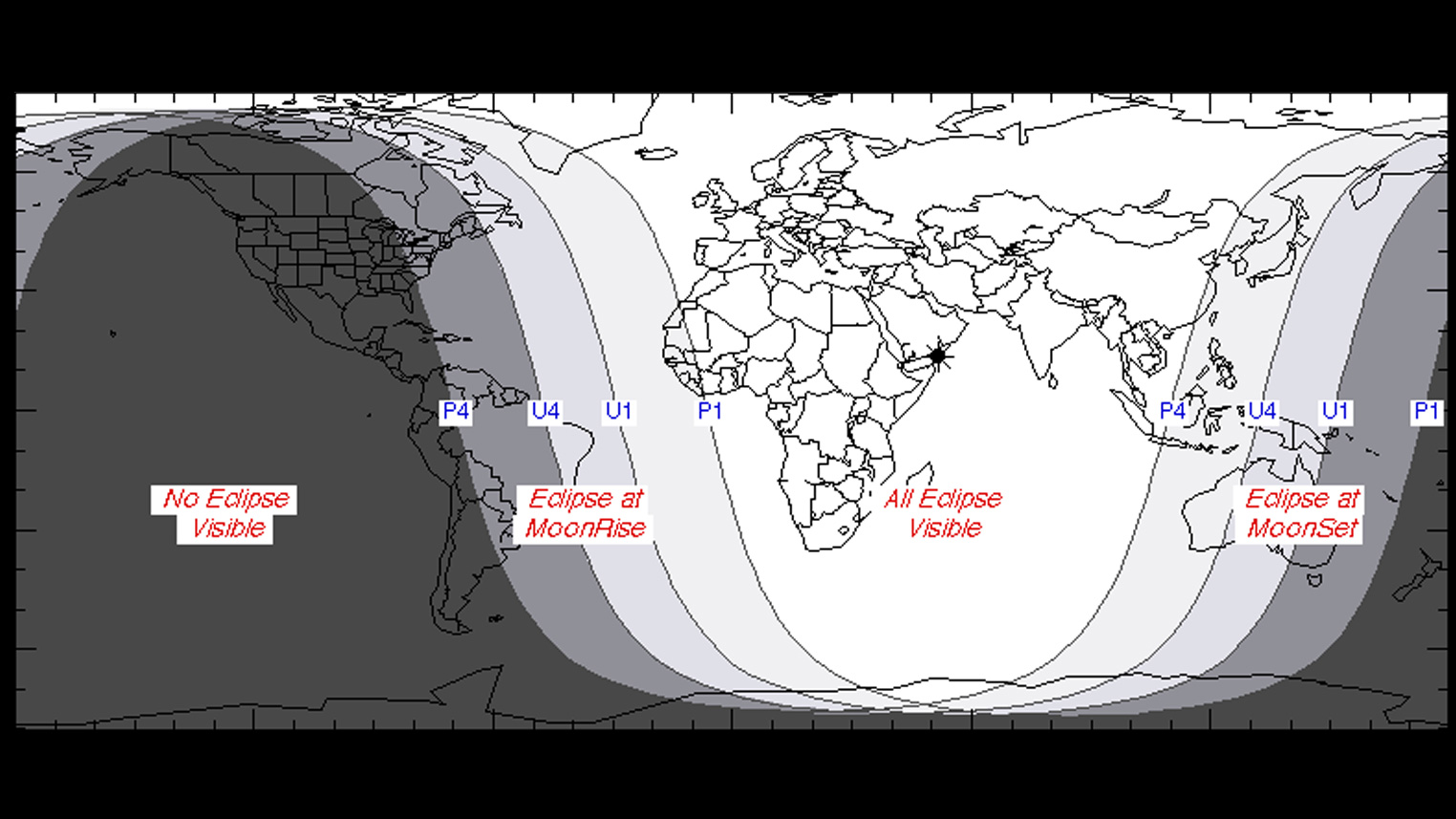
Partial Lunar Eclipse of Oct. 28, 2023
Less than a quarter of the moon will dip into the deep part of Earth's shadow, so just a corner of the lunar face will appear copperish-red. People in Africa, Europe and Asia will have the best view of the partial lunar eclipse, which peaks at 4:15 p.m. EDT (2015 GMT).
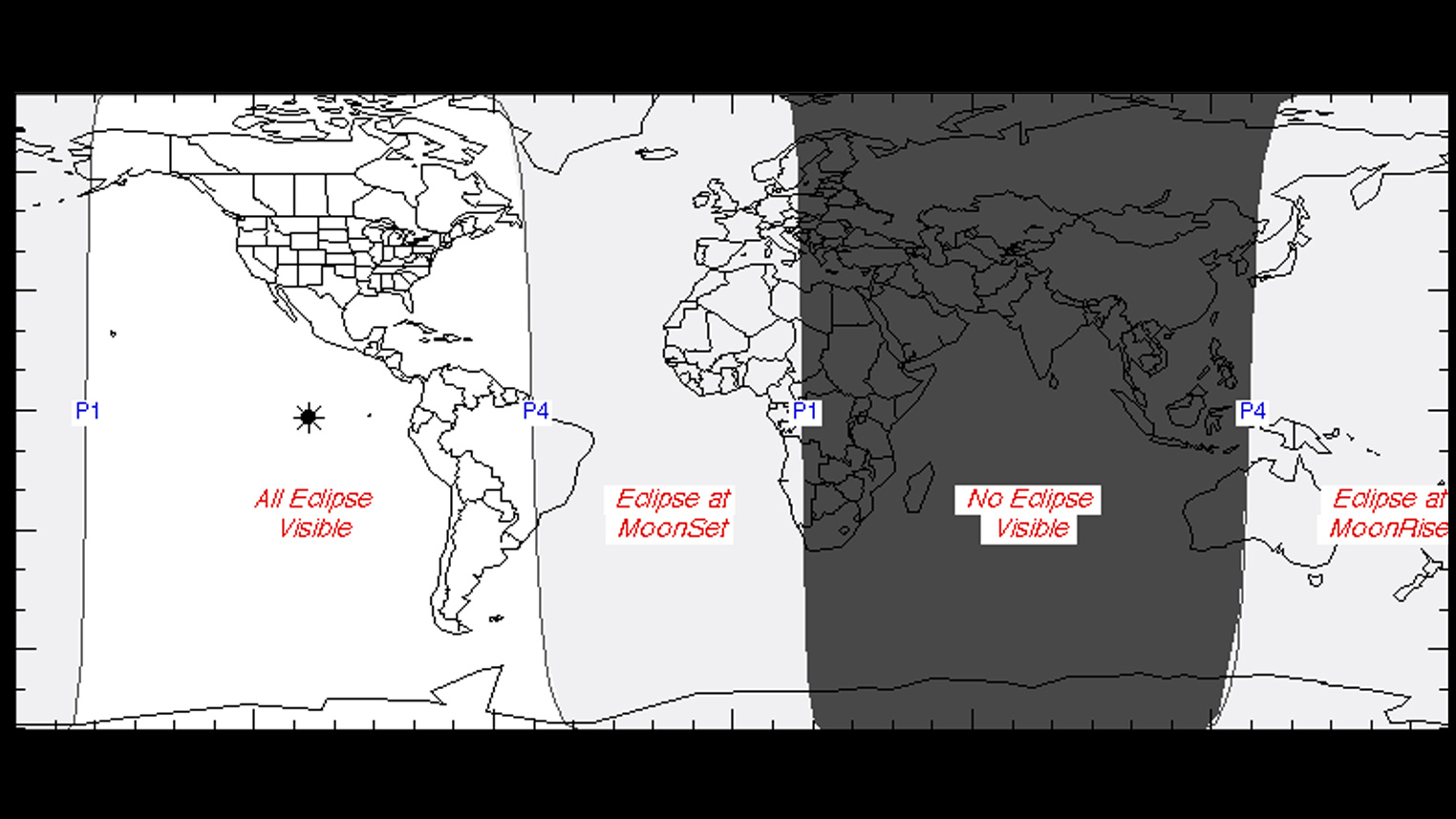
Penumbral Lunar Eclipse of March 25, 2024
All of North America and most of South America will get to see the tea-tinted lunar face during the Mar. 25, 2024 penumbral eclipse. This event peaks at 3:13 a.m. EDT (0713 GMT).
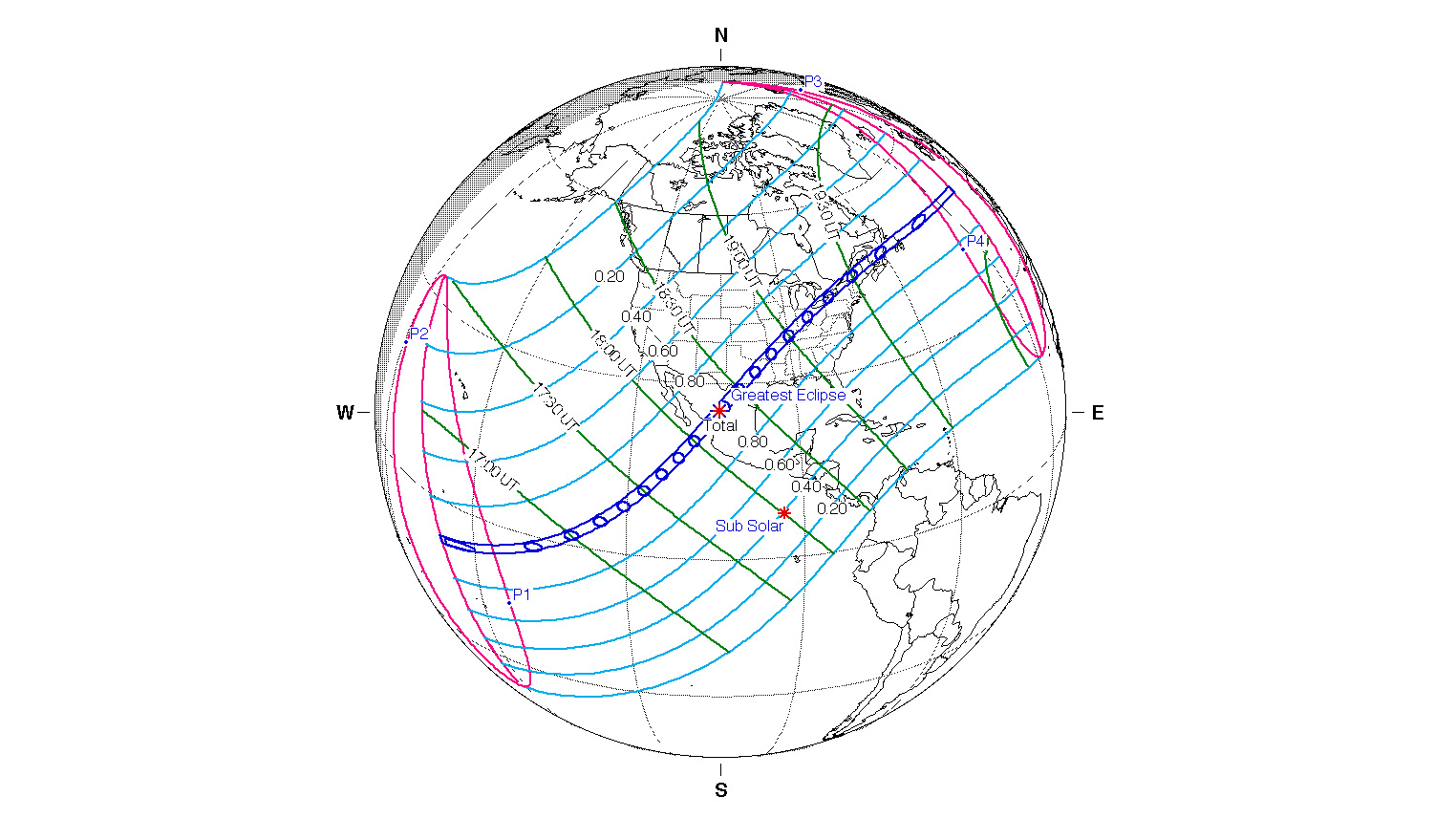
Total Solar Eclipse of April 8, 2024
Similar to the ''Great American Solar Eclipse" of 2017, the path of totality will cross North America from coast to coast. It will make landfall in Mexico, travel through Texas and head up all the way to Canada. This eclipse will peak at 2:17 p.m. EDT (1817 GMT).
Related: Total Solar Eclipse of 2024: Here Are Maps of the 'Path of Totality'
Please note: There are several solar eclipses listed here, and spectators should ONLY observe the phenomenon directly if they have the aid of protective eclipse-viewing eyewear. Solar eclipses are only safe to view with the naked eye for the few moments during a total solar eclipse when the moon is blotting out the entire body of the star.
Editor's Note: If you captured an amazing photo or video of the total solar eclipse and would like to share it with Space.com's readers, please send your images with comments to spacephotos@space.com.
Get the Space.com Newsletter
Breaking space news, the latest updates on rocket launches, skywatching events and more!
- Moon's Shadow on Earth Seen from Space During Solar Eclipse
- Great American Solar Eclipse of 2017: Your Amazing Memories
- NASA Probe Sees Great American Solar Eclipse from the Moon (Photo)
This article was updated on Feb. 1, 2021 by Space.com Reference Editor Vicky Stein.
Follow Doris Elin Salazar on Twitter @salazar_elin. Follow us on Twitter @Spacedotcom and on Facebook.
Join our Space Forums to keep talking space on the latest missions, night sky and more! And if you have a news tip, correction or comment, let us know at: community@space.com.

Doris is a science journalist and Space.com contributor. She received a B.A. in Sociology and Communications at Fordham University in New York City. Her first work was published in collaboration with London Mining Network, where her love of science writing was born. Her passion for astronomy started as a kid when she helped her sister build a model solar system in the Bronx. She got her first shot at astronomy writing as a Space.com editorial intern and continues to write about all things cosmic for the website. Doris has also written about microscopic plant life for Scientific American’s website and about whale calls for their print magazine. She has also written about ancient humans for Inverse, with stories ranging from how to recreate Pompeii’s cuisine to how to map the Polynesian expansion through genomics. She currently shares her home with two rabbits. Follow her on twitter at @salazar_elin.









